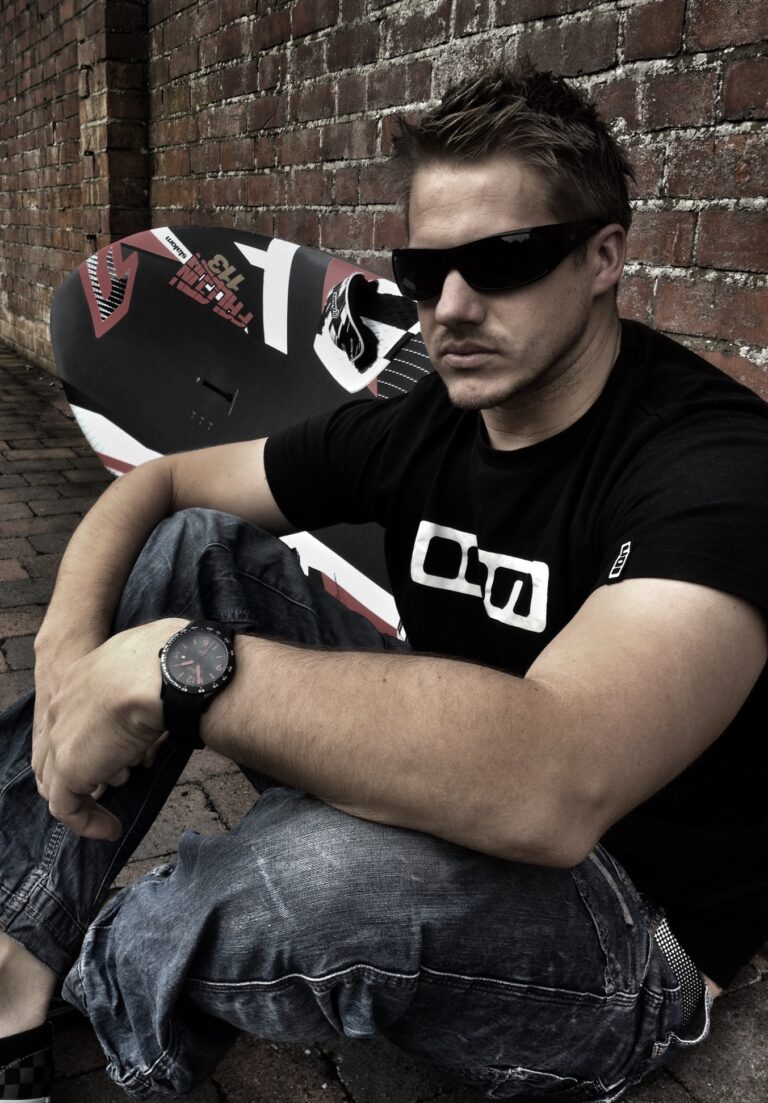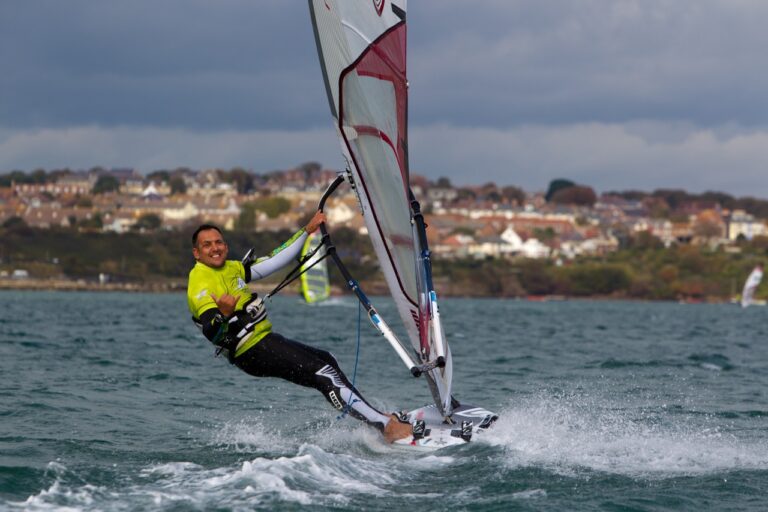We all love going fast; blasting back and forth, racing mates and trying to get that little bit of extra speed out of a gybe. For these very reasons slalom racing is pretty popular, many of us taking part in it at national, local or even a very informal level. Boards is joined by some of the UKWA’s top slalom racers in a short ‘Slalom Secrets’ series, which aims to give you inside scoop on how to improve your slalom skills.
In this first part we cover:
Starting – What process do the top guys use?
and
Covering your position – Is it worth it?
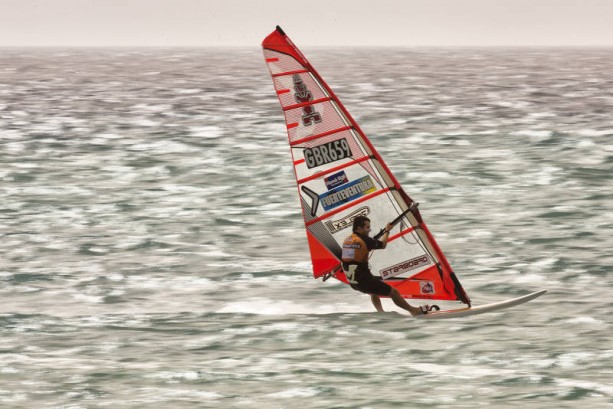
Starting
James Dinsmore: Try to have the discipline to practice starts on your different boards and in different conditions. How far you want to be from the line with twenty seconds to go is different in 12 knots to 25 knots of wind. You need to practice to be able to rely on judgement rather than luck.
The easiest practice can be done on your own and simply involves selecting a buoy or any fixed object in the water and running through complete start sequences until you are arriving at the buoy at zero seconds going full tilt.
Different approaches to the start suit different circumstances. For example coming late and at speed from behind the pack can sometimes work well, but in very light winds it can easily go horribly wrong as it is hard to maintain speed coming through the dirty air of the pack.
Simon Pettifer: You must have a start watch, one of the big yellow racing ones ideally, as you’ve got to be able to see it easily. Hang around the start boat once you’re heat flag has gone up, hit your 3 min start sequence when you hear the horn sound and the flag goes up, then sail away from the boat for 30 secs, gybe and come back to the boat ready to press the sync button on you’re watch when the 2 min flag comes down. This is to make sure you have the count down bang on and you know you’ll have the best chance of hitting the line bang on the gun.
There are different ways of approaching the whole start thing, at the moment I’m having the best time with this one: after the two minute flag has gone up I gybe and once again sail away from the start boat, not at full speed just taking it easy. Then just before the 1 minute flag I’ll gybe again, all the while taking note of who’s around me.

At this point there tends to be a few of you together starting to gather in a line ready to put the foot down. So you’re one min from the start if you sail real slow, so you know you can cruise up toward the start picking you’re time when you sheet in, you’re in the straps hooked in and planing toward the start. From the warm ups sailing around the start line you’ll know when to sheet in and go for the line, it’s all about knowing how far you travel at full speed, only practice can tell you this.
There are a couple of things you can do to get over some mis-timing probs. If you’re too early for the start and you think you’re going to be over the line, bear away down wind so you’re no longer heading straight for the line, therefore you take longer to get to the line but you don’t have to slow down and you don’t lose the speed that you’ve just tried to get up. This can involve cutting people up a bit as you’re going to sail straight across the top of them, they will not be happy but remember you want to be hitting the line at full speed – hopefully somewhere near the front of the pack. If you’re at the back at the start then you’ll have a hard time catching up, your only hope is people making mistakes at the gybe but this doesn’t happen all that often.
Simon Cofield I sail away from the start boat at 3 minutes and gybe at about 1.5 minutes. I try to leave some room downwind of me as I’m coming towards the start, this allows me to bear away and hit the start line at top speed.
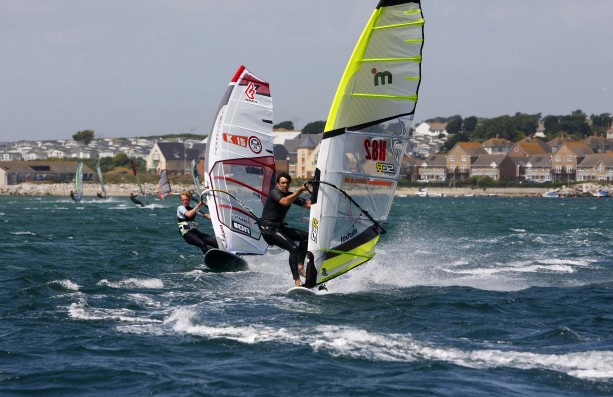
Kev Greeneslade This is dependent on the conditions and sometimes the venue. First up sail the course, secondly check the bias on the start line and take a transit if possible.
My preferred method of starting is to wait by the boat for the 3 minute signal then sail towards the first gybe mark for 25-30 seconds, and then sail back towards the boat. In theory so long as I haven’t fallen off I should be able to check my watch at 2 minutes, now sheeting in to full speed sailing away from the boat. Next up is to gybe at 1 minute ish and make it a good one as falling off here is not an option! Then it’s flat out towards the preferred end of the line, normally the the pin; as I approach the line I try to leave space down wind of me to bear away into just incase I am early.
The start is probably 80% of the race so it’s crucial to get right as everyone is so bloody fast.
Ant Baker Everyone goes around the starting process differently, personally as a fat bastard I like to only put in 1 gybe; so I sail from the start line on the 3min flag and gybe at 1.5 mins then fang towards the pin end and then aim to first to mark one 🙂

Covering
James Dinsmore: It is certainly important to be aware of the sailors around you in order to defend your position. However, especially when you are inexperienced, it is easy to get put off and make unnecessary mistakes because of distractions. If I am leading I hardly ever look back and prefer to concentrate on looking forward and sailing my own race as I find I make less mistakes that way.
Simon Pettifer So you’re going down the first reach someone is right behind you gaining, what can you do? Make it hard for them, push them up wind, off the sailing line and don’t back off unless they’re going much, much quicker than you.This will slow them up and therefore distract them from the job in hand. That’s about the only covering I seem to do, apart from that I’m usually trying my best to go as fast as I can and not go over the front of the board!
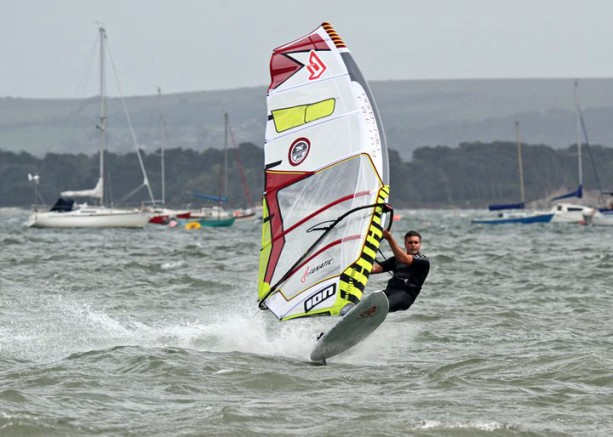
Simon Cofield I sail the shortest route to the next mark at top speed, I don’t get involved with altering course to much, it just slows you down.
Kev Greeneslade I normally race my own race and rely on board speed and good starts; once you’re in the lead it’s easier if you can hold your nerve. Covering doesn’t really come in until after a few rounds, then becomes evident who you are racing and for what position. Then you can start doing stuff like sailing over the top of your nearest rival off the start etc.
Ant Baker Sheet in!
Next time we will be covering gybing and getting to your top speed.
For more technique on Boards check out the all features here.


